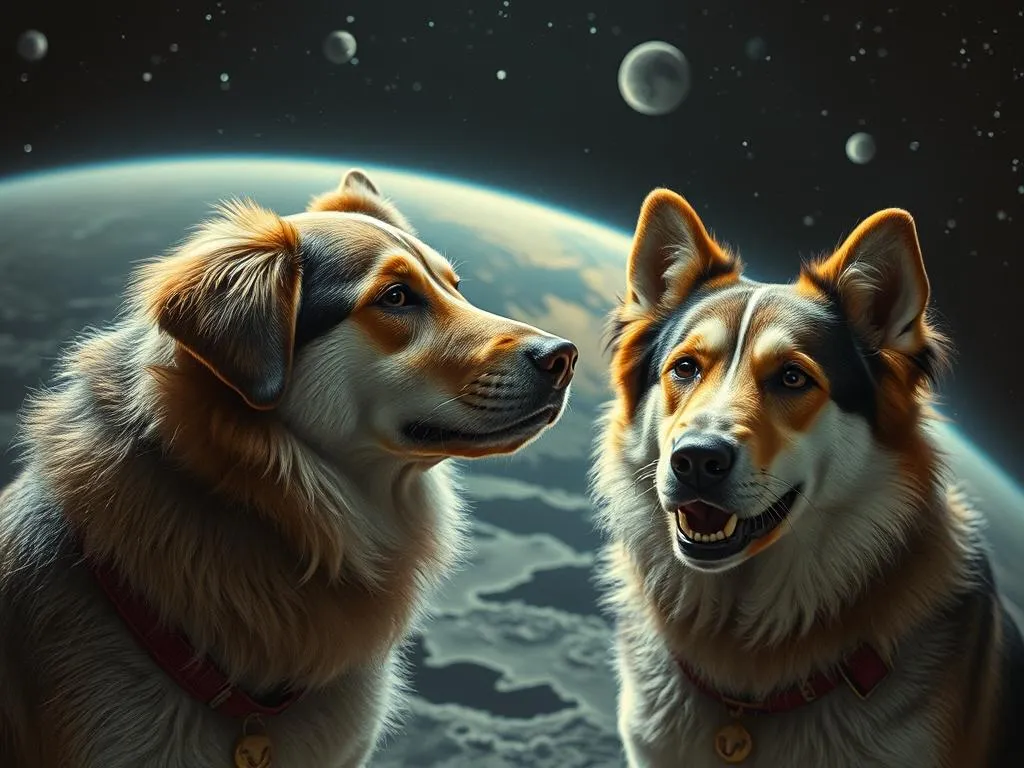
Introduction
During the height of the Cold War, the race to explore space became a significant aspect of geopolitical competition between the United States and the Soviet Union. As nations sought to demonstrate their technological prowess, the use of animals in early space missions became a critical aspect of research and experimentation. Among these pioneering candidates, the Soviet space dogs emerged as remarkable heroes whose stories are often overshadowed by human astronauts. This article delves into the fascinating history, contributions, and legacy of these canine comrades who played a pivotal role in the exploration of the cosmos.
The Historical Context of Space Exploration
The Space Race
The Space Race was not merely a quest for scientific advancement; it was a manifestation of ideological rivalry between the United States and the Soviet Union. Following World War II, both nations sought to establish themselves as superpowers, and space exploration became a battleground for technological supremacy. Key milestones, such as the launch of Sputnik 1 in 1957, marked the beginning of the Soviet Union’s dominance in space. This unprecedented achievement sent shockwaves through the United States and ignited a fervor for space exploration, leading to a series of significant events, including the first human in space, Yuri Gagarin, in 1961.
The Role of Animals in Space Research
In the early days of space exploration, scientists needed to understand the physiological and psychological effects of space travel on living organisms. This led to the decision to send animals into orbit. The Soviet space dogs became essential participants in this research, offering invaluable data that would inform the safety of human missions. While the United States also experimented with animals, including monkeys and mice, the Soviet Union’s focus on dogs set them apart, highlighting their unique contributions to the field.
The Soviet Canine Program
Origins of the Program
The establishment of the Soviet space program was a monumental endeavor spearheaded by visionary figures like Sergei Korolev, the chief designer of the Soviet space program. Recognizing the need for reliable data on how living beings would fare in space, Korolev initiated experiments with dogs. The program aimed to prepare for human spaceflight and ultimately propel the Soviet Union ahead in the Space Race.
Selecting the Right Dogs
Choosing the right dogs for these crucial missions was a meticulous process. The criteria included size, temperament, and health. The selected dogs were typically small and lightweight breeds, such as terriers and other mixed-breed canines. These dogs were often strays found on the streets of Moscow, showcasing the resourcefulness of the program. Each dog was carefully trained and acclimatized to the environment they would encounter in space.
Notable Soviet Space Dogs
Laika: The First Living Creature in Orbit
Among the Soviet space dogs, Laika stands out as the first living creature to orbit Earth. Launched aboard Sputnik 2 in November 1957, Laika’s mission was groundbreaking yet fraught with ethical dilemmas. While her journey provided critical data about the effects of space travel on living organisms, it also raised significant concerns regarding animal welfare. Laika’s fate was sealed when it was determined that she would not survive the mission, a decision that sparked ongoing debates about the ethics of using animals in research. Her courageous journey marked a pivotal moment in space exploration history and solidified her legacy as a canine pioneer.
Other Significant Dogs
Following Laika, several other Soviet space dogs gained recognition for their contributions to space exploration. Among them were Belka and Strelka, who were launched aboard Sputnik 5 in August 1960. Unlike Laika, these dogs successfully returned to Earth, paving the way for future human missions. Their mission provided essential data on the effects of space travel on living organisms, contributing to the safety of subsequent human flights. The successful return of Belka and Strelka also captured the public’s imagination, leading to widespread media coverage and public support for the Soviet space program.
Life Before Launch: Training and Preparation
Training Regimens
The training regimens for Soviet space dogs were intensive and multifaceted. Dogs underwent rigorous physical conditioning, acclimatization to confinement, and exposure to various stimuli that they would encounter during space missions. This process ensured that the dogs could handle the physical and psychological stresses of space travel. Their training involved simulated flights, sensory desensitization, and careful monitoring of their health and behavior.
Test Flights and Simulations
Before the historic launches, the dogs participated in numerous test flights and simulations. These suborbital flights allowed scientists to assess the dogs’ reactions to changes in gravity and atmospheric conditions. The data collected during these simulations were invaluable in refining the engineering of spacecraft and enhancing the safety protocols for future missions.
The Missions: Experiences in Space
Mission Details
The missions featuring Soviet space dogs were carefully planned and executed, with each launch meticulously timed and monitored. Following Laika’s historic flight in 1957, the subsequent missions with dogs included a series of tests designed to gather data on physiological responses to space conditions. Notable missions included the flights of Belka and Strelka in 1960, as well as the later missions involving other canine astronauts.
The Dogs’ Experiences
The experiences of the Soviet space dogs during their missions varied. While Laika’s journey was tragic, Belka and Strelka’s flight provided insights into the effects of space travel. The dogs experienced weightlessness, which was a novel condition for them. Telemetry data revealed how their bodies responded to the environment, including changes in heart rate, breathing patterns, and overall health. The information gathered from these missions significantly advanced scientific understanding and contributed to the eventual success of human spaceflights.
The Aftermath: What Happened to the Space Dogs?
Fate of the Dogs
The fate of the Soviet space dogs varied significantly after the missions. Laika, unfortunately, did not survive her flight, which led to widespread criticism and ethical concerns regarding animal testing. In contrast, Belka and Strelka returned to Earth and were celebrated as heroes. They even became the first animals to have offspring in space, as Strelka later gave birth to a litter of puppies, some of which were gifted to prominent figures, including President John F. Kennedy.
Legacy of the Space Dogs
The legacy of the Soviet space dogs is profound. Their missions laid the groundwork for future space exploration, influencing the design and safety measures of human spacecraft. Today, the contributions of these canine pioneers are recognized and memorialized in various forms of popular culture, reminding us of their unique role in the history of space exploration.
Cultural Impact and Public Perception
Media Coverage and Public Reaction
The media played a pivotal role in shaping public perception of the Soviet space dogs. The missions garnered extensive coverage, with stories celebrating the bravery of these animals and the scientific advancements they represented. While some public sentiment was in favor of using animals in research, there were also growing concerns about animal welfare and ethical considerations. The dichotomy of admiration and ethical scrutiny continues to resonate in discussions about animal testing in scientific research.
Space Dogs in Popular Culture
The influence of the Soviet space dogs extends beyond historical accounts; they have inspired numerous works in popular culture. Films, books, and art have been created to honor these canine astronauts. For instance, animated films have depicted their adventures, while documentaries have explored their lives and missions. The enduring legacy of these dogs serves as a reminder of their contributions to science and the sacrifices made in the name of exploration.
Conclusion
The significance of the Soviet space dogs in the annals of space exploration cannot be overstated. These brave canines ventured into the unknown, providing critical data that paved the way for human space travel. Their stories evoke reflections on the ethical implications of using animals in scientific research and highlight the sacrifices made in the pursuit of knowledge. As we continue to explore the cosmos, the legacy of these unsung heroes serves as a testament to the spirit of discovery and the enduring bond between humans and animals in the quest for understanding the universe.









